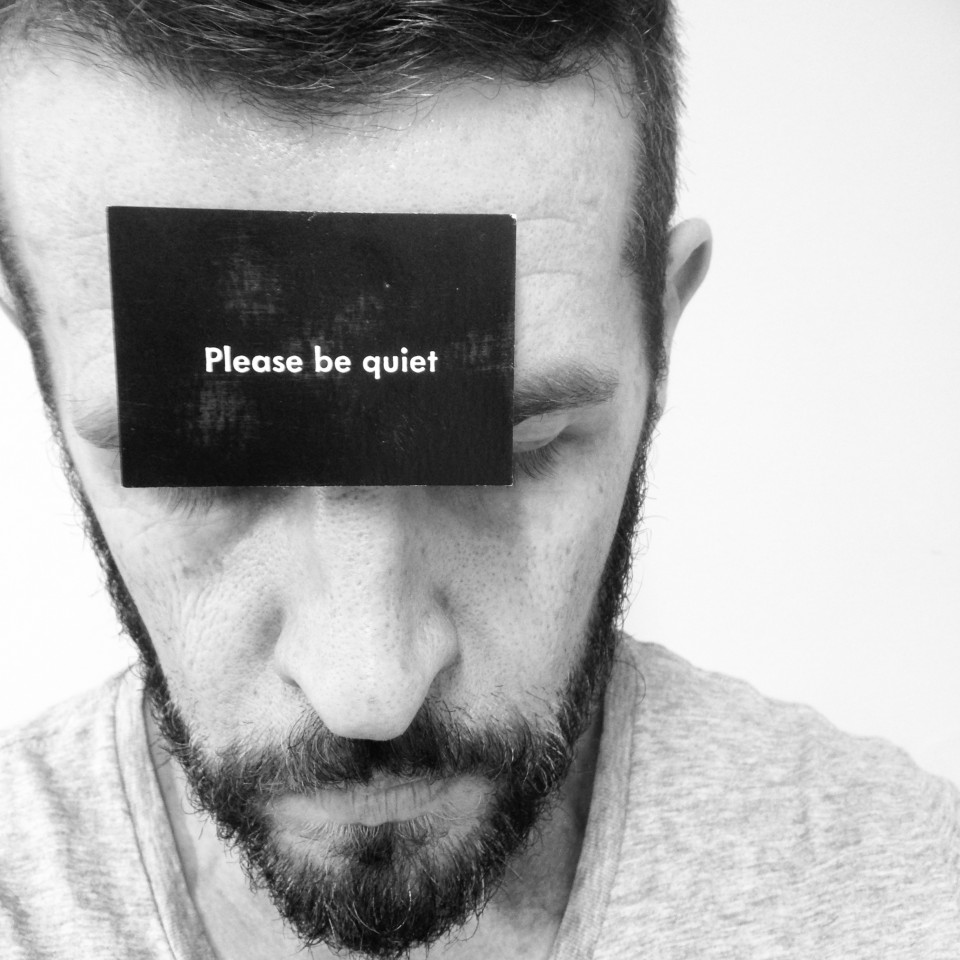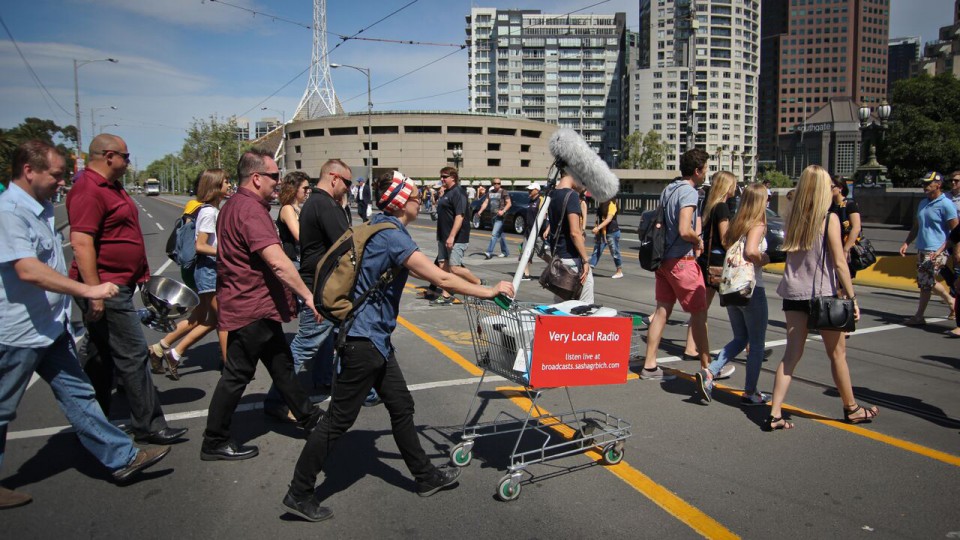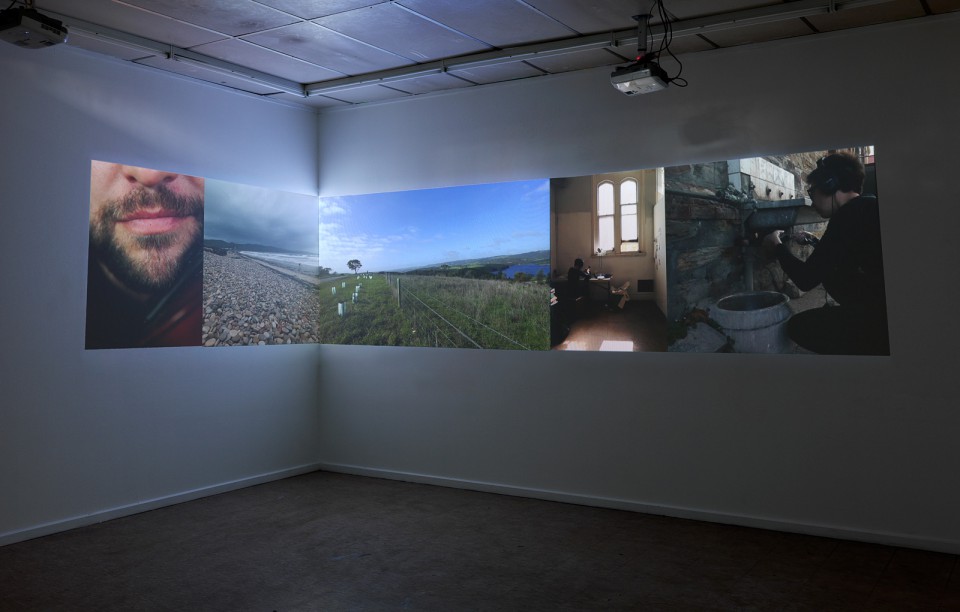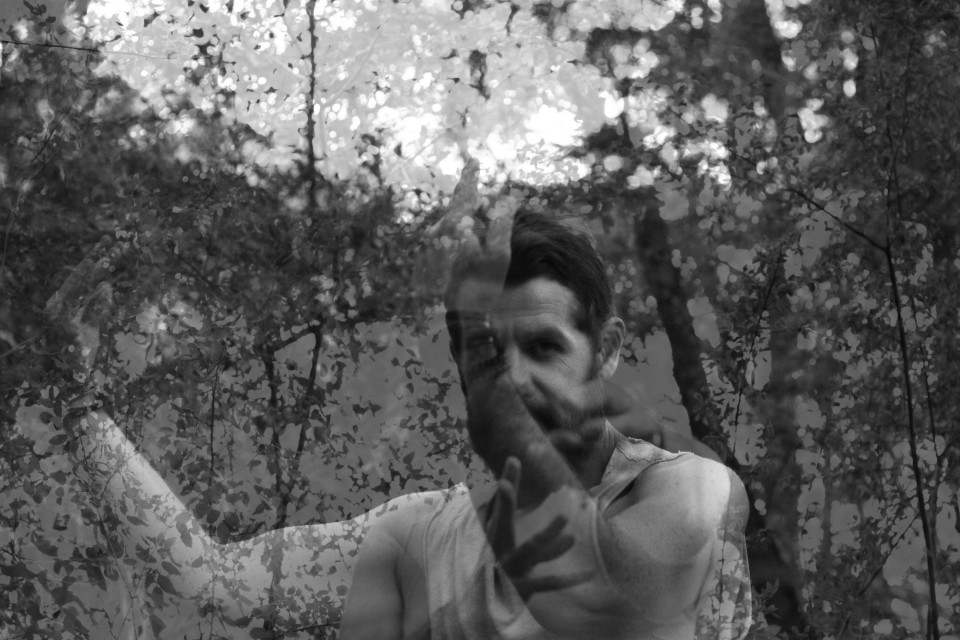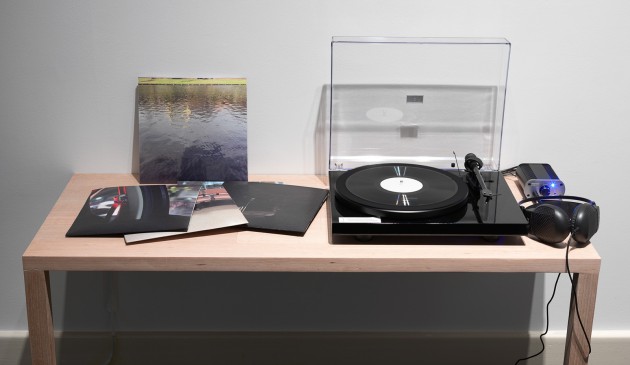
Vitalstatistix spoke with Adelaide-based independent artists Sasha Grbich and Jason Sweeney. Sasha is a visual artist, writer and lecturer; Jason is a singer-songwriter, composer and multidisciplinary artist. Both have long-term associations with Vitalstatistix and each is involved in our five-year climate change project Climate Century.
Climate Century asks artists to consider how will we commemorate and memorialise the climate century? The project includes a series of projects, commissions and events.
Join us on Sunday 17 July at Waterside for Climate Century – An Afternoon of Artist Talks.
V: Could you each tell us about your artistic practice?
Jason Sweeney: At the heart of everything, I make sound. Melancholy responses to the world. In recent times my focus has returned to song-writing with my band Jason & Silver Moon. But the past has seen me making live performance, online projects, films and installations. I work hard every day to make life and art the same thing. To practice quietness, to embrace melancholy, to live within my means, to give back to the planet in some way.
Sasha Grbich: I am interested in the ways places, things, communities or stories contribute to an artwork happening. My works are open to their local worlds. For example, I have worked with singers to find and record notes for and from fragile environments, made works that respond to the flickering of light in the windows of urban streets, pressed vinyls of uncomfortable silences and broadcast soundscapes from empty rooms, abandoned buildings and moving shopping carts. I am currently building a ‘wind sound effect machine’ in order to respond to gales in upcoming performance and video works. These are the kinds of absurd and poetic acts I undertake to reflect on how I exist within the places and communities I am part of.
V: You are both based in Adelaide and maintain solo studio practices. What are your thoughts on the opportunities available to mature, contemporary artists in South Australia – what are the benefits and disadvantages of working here?
SG: I go to work each day in my studio space at Fontanelle studio surrounded by wonderful artists and exciting half-formed things. I teach at the Adelaide Central School of Art and enjoy being amongst the vibrant art practices of my students and colleagues. My more personal communities also contribute to making my work. I collaborate with my brilliant partner Heidi Angove and try out new video ideas with my ever-patient sisters, friends and parents. I take great pleasure in these daily engagements within strong creative communities. Working with Vitalstatistix over the past five years has provided important, intense and rewording pockets of activity and openings to national and international art and performance practices. The benefits of working in Adelaide all stem from being part of close, collaborative and supportive industry and communities.
The disadvantages of working in South Australia can be illustrated through the example of recent Australia Council funding cuts. These upheavals have been debilitating to the small to medium sector in contemporary and experimental arts. In Adelaide my sector is small (although vibrant and exciting) – and it is very vulnerable.
JS: I’m an absolute advocate for Adelaide. It’s a place where you can still breathe clean air and make work without too much noise of cultural saturation.
In a world falling apart and a global population increasing beyond measure and pressurising the planet, I choose Adelaide as one of the remaining possible bastions of sustainable life, both in my day-to-day existence and in my work.
I need to be near nature all the time, so South Australia is a perfect place. I suppose it’s the ideal place for an introvert – and the internet connects me to all the people and things I need.
V: Sasha, as well as co-curating last year’s Climate Century exhibition, you made an artwork called Small Measures. Can you tell us about this work?
SG: ‘Stand in a place you feel to be vulnerable. Listen to the sounds happening. Now find a note, tune-in and hold it. Breathe. Hold a note again.’
This is the instruction I gave to volunteers from the Born on Monday choir when making Small Measures for Climate Century 2015. In some louder industrialised environments, the sounds sung became somewhat adversarial and lament-like. A sensitive registering of the small differences between places was played out in the variations between notes the choir members improvised. In the resulting video and sound installation the notes mixed unpredictably across the upper-floor of an old bank building. At once a love song and a lament, the work also held the feeling of ‘tuning up’ reminiscent of moments where a person and instrument (here a person and an environment) start a negotiation. In making the work I was driven by an image of sonography – the way ships tentatively feel their way along the ocean floor by bouncing sound off it.
V: Jason, can you tell us about Climate of Cruelty, a new commission from Vitals as part of the Climate Century commissioning process?
JS: Climate of Cruelty will develop as a song-cycle and live performance event working with writer Michael Koenig and my band Jason & Silver Moon (with Zoë Barry and Jed Palmer) – as well as creating an online activist space, writing portal, and resource. It is a way to redress the balance for individual animals slaughtered at the hands of humans in environmentally-impacting commercial industries in Australia and globally.
In my own life, the time arrived when I needed to face the evidence of the history of cruelty against animals to literally feed our human desires; how the livestock industry exists because of our human need to consume animals; how such an industry has a major impact upon the planet, upon the environment, and upon biodiversity; and on the act of needless killing.
V: With climate change being the greatest challenge facing humans, other species, and the planet, there has been a burgeoning of artistic and cultural responses to this condition. Are there things to be mindful of when investigating climate change and the Anthropocene through art?
SG: I am excited by the potential of art to prompt new ways of feeling and thinking within this situation. A great example of this can be found in Sundari Carmody and Matthew Bradley’s collaborative work Winds of Increasing Magnitudes. During the Climate Century exhibition last year their huge semi-transparent silk flag (stripped of all the markers and signs that may suggest ownership or claiming of land) traced movements of air on sky. To visit the work, audiences trekked out to the windiest part of Port Adelaide where loose hair and scarves joined in the action of the flag. Standing in heightened awareness of the wind, people might remember growing up under the hole in the Ozone Layer, checking the UV index, and wondering at the air quality whilst inextricably breathing in. Experiencing Matt and Sundari’s work I was brought into new relation with memories and ideas while becoming sunburnt and windblown.
The ‘Anthropocene’ describes the current period of time in which human acts take on geological proportions. Like many artists, I understand my practice as part of ways of being in, and reflecting on, my world. It is no surprise then the condition of climate change has become a situation within which my own (and other’s) works act.
JS: In order to make responses about our planet as artists I truly believe there has to be equal response in one’s personal life. As humans making art about climate change, surely the only way to fully express an idea is to practice – fully – an investigation into the way one lives.
For me, I can’t make a work about animal cruelty and the adverse effects of the livestock industry on the environment, and then live a life that promotes cruelty: especially to animals. Climate of Cruelty is about being mindful that cruelty can often be silent or silenced or disguised as comfort, especially where the use, consumption, and abuse of animals is concerned.
I’m always confused when artists who say they are environmentalists are still contributing through excessive use of resources in their work, or are not working with recycled materials, or – dare I say – are not vegetarian or vegan. Artists, in so many respects, should be the voices to the dire situation our planet faces – we are, after all, part of the human impact that has led to the coming catastrophes. In a way, all that artists – and humans – should be concerned about now is our place on the planet and our own actions in contributing to climate change. It’s an emergency.
V: As artists working in the space of climate change, how do you grapple with feelings of melancholy and feelings of hopefulness?
JS: Once you’ve made the commitment to live a cruelty-free life, which includes being vegan, there are things you can never un-know. Sometimes I feel such urgency to communicate what I’ve learnt about animal suffering to other people, but then I watch them continue to consume animal products as if nothing were wrong.
My greatest share of melancholia is derived of human behaviour. When it comes to the dire impact of climate change as a result of human greed it seems impossible to not despair. This planet doesn’t need humans. We suck the earth dry. When humans disappear I am sure the earth will breathe a huge sigh of relief. The animals, plants and trees can finally get on with living, as they always have, in a sustainable way with the planet.
Knowing humans have created an industry that literally churns out animals for our desires, our plates, our bodies – creating an even greater impact upon our planet – how can I not exist in sadness?
Sometimes, when I look at the damage humans have inflicted upon the earth it renders me inarticulate, silent.
Hopefulness will come when I begin to observe those around me really beginning to embrace a cruelty-free, animal product-free life. Only then will I know an important change is starting to happen. In the meantime, I will keep my polite silence at the feeding table as I watch those around me continue to be sadly misinformed about the suffering of animals at the cost of our planet and our bodies.
SG: If there was no hope, I wouldn’t make work. I believe artwork always has radical potential to open new ways forward in any situation. I watch for these glimmering moments where art is part of the making of wild associations, and in them find great hope against the backdrop of a very difficult and depressing global condition.
V: You both have made multiple works that explore urban sound and quietness. Tell us a little bit about this area of interest.
JS: Quietness and silence is innate in me. Introversion and seeking solace has been with me since I was a child, in fact I never wanted to leave the womb! Now, I think my quietness has been worn down as I continue to observe the sadness and horrors of the world. Idle chatter is pointless. So it seems only natural in my later years my obsession with quiet seeking has found its way into my work.
My largest project, Stereopublic (Crowdsourcing the Quiet), asks members of the public around the world to use an app to contribute quiet spaces in their cities as a way to respond to the noise, din and anxiety of our urban environments. A participant can record audio of that space, and I gift back to them an original ambient composition. To date 65 cities around the globe are participating with almost 2000 quiet spaces found. It’s pretty inspiring. And, to reflect back on the idea of ‘hope’ above, it gives me hope there is a global community around me seeking the peaceful, seeking out spaces away from the din of industry and crowds and ‘vibrancy’. So I’m continuing this exploration in a more personal sense this year with something I call Quiet Ecology – which maps sonically, culturally, and environmentally the impact of noise on the planet and the real benefits of quiet preservation for our continued well-being.
SG: Heidi and I temporarily “borrowed” a shopping trolley for five Saturdays in a row in a shopping centre plaza in Noarlunga. I clanked about with a mad scientist set of wires and 3G dongles that let me stream online the intimate, sometimes harrowing and delightfully banal soundscapes and conversations I had with passers-by. Nothing was recorded. These sounds and conversations were for those who tuned in and for those who were there.
I am often led by sound, although I don’t describe myself as a sound artist. I love the immediacy of sound and the gentle touch of quiet. I like listening more than creating sound, and as such my works often make heightened situations for the act of listening or tuning-in to an occurrence or community.
V: You have each worked with Vitalstatistix before, on multiple projects in addition to Climate Century, such as our annual experimental art hothouse Adhocracy, and as commissioned artists for Cutaway, a three-year project completed in 2013. What value does these types of long-term relationships between artists and organisations hold? What do you see as Vitalstatistix’s place/role locally and nationally?
SG: My relationship with Vitalstatistix has been (and continues to be) intrinsic to my development as a professional artist.
For Adhocracy, Heidi and I chartered a boat, put an internet radio transmitter on it and took it out to the edge of the broadcast network. This was an act that sought failure, ‘dropouts’ and lost communications. Adhocracy provides a forum for experimentation, failure, and conversation. It is a place for audiences to come close to tentative and fascinating early stage projects. The program brings together experimental artists from many fields, and the conversations had over toasted sandwiches and between showings spark new trajectories.
There is a symbiosis that occurs when an organisation is fueled by, and fuels, the communities it participates in. Long-term community embedded projects like Cutaway and Climate Century allow time for meaningful collaborations to bear fruit.
In order to lead, you have to break new ground. Vitalstatistix is the only place in South Australia for audiences and artists to experience and make works that play with the expanding and increasingly blurred edges of performance and the visual arts. Vitals is a natural and national leader.
JS: My first real long-term connection to an organisation was with Doppio-Teatro/Para//elo between 1998-2004. This was such an important time of my life – and, in the history of contemporary art and experimental performance in SA, they were one of the more significant companies to exist. That involvement, particularly with Teresa Crea, was the best mentorship I could ever hope for. Teresa was really setting the stage for events like Adhocracy – unfortunately people just didn’t seem to get it or appreciate it at the time and that history, especially of Para//elo, isn’t acknowledged. SA needs to honour Teresa and how much she invested in young, experimental artists – particularly artists from diverse cultural backgrounds. Teresa taught me art, culture, and community are intrinsic, interconnected. She’s a legend.
And so my next longer connection has been with Vitalstatistix – a logical connection after so many years with Para//elo. Vitals is a company I’ve always loved as a feminist/queer space for performance and personally as a queer artist I saw much comradeship. My deeper connection from 2010 onwards has been so important to my artistic development – allowing me both an artistic and a curatorial platform in which to work. Vitals is the only company in SA dedicated to a national conversation around the delicate practice of emerging and experimental live art and performance.
V: How are you feeling about the future of the arts locally and nationally?
JS: We’re living amongst one of the world’s oldest living cultures and so I’m consciously aware I’m a queer, white, male existing in a place of deep spirituality, mystery and ancient Indigenous creativity. Art has always been here and will continue way beyond my years. Art exists in nature, in people, in the everyday, in the spiritual. The inheritance of this slightly icky European model of contemporary art in Australia has always made me uncomfortable so I struggle to talk about that, but I’ll try.
I’ve always felt it is within the power of the culture itself to sustain and drive forward its future. Like most of our society, we rely so heavily on government bodies to shape and make our lives. Lately, the destabilising funding cuts have made me think about this addictive feeding tray that arts funding has become – and I’ve certainly had my fair share and that’s amazing, I’m very lucky. I am committed to being an artist and making work as a response to the world no matter what – I just happen to be in a country where the option of seeking government funds is possible. Yet, I am worried artists and the art world’s reliance on funding may impact our future. It’s like we align getting a grant with making work or having status – or if a curator selects you then you must be better than those who were not chosen. Sure, it’s great when it happens, when you get the ‘yes’ emails – but would I still make a work if there was no funds or project selections?
Perhaps it’s analogous to the way we consume food. We rely on a supermarket or grocer to provide for us – and yet, you eat a pumpkin, save its seeds, put it in the ground, and in a few months you’ll start to see a new pumpkin grow and you’ve got dinner – and it cost nothing but the time it took and diligence you had to plant a seed in the earth.
At the end of the day we need to eat, so we need sustenance – and it can come for free. In these times of global crisis, the future holds so much for some real creative gardening to take place – literally and figuratively. Let’s get back to the earth and stop worrying about money all the time. Money and the desire for it are killing our planet. It’s up to artists to lead the charge. To create work, live a frugal life, and respect nature – give back to it rather than tear away at the planet’s resources. The death of the arts (in that ‘industry’ sense) will be an all-consuming anxiety around ambition, competition, and the bloody fight to the last dollar or status position. We need to be conscious the arts don’t start to mirror the corporatised and patriarchal systems most of us are fighting to escape from.
SG: Thinking to the future, I feel depressed.
Even as I begin to answer this question I find myself winding up into a rant-like answer about the importance of arms-length funding and the potential of a well-funded industry. But it has all been said, and seems to be unheard by those who need to act.
This isn’t a reason to give up on hope or activism.




